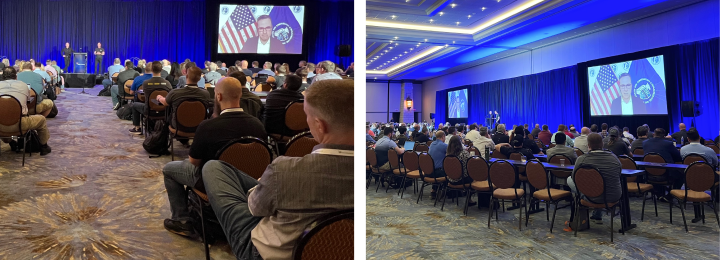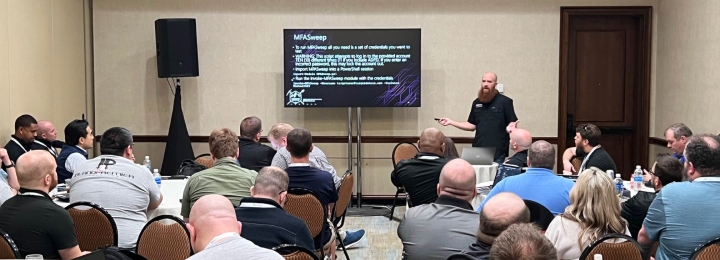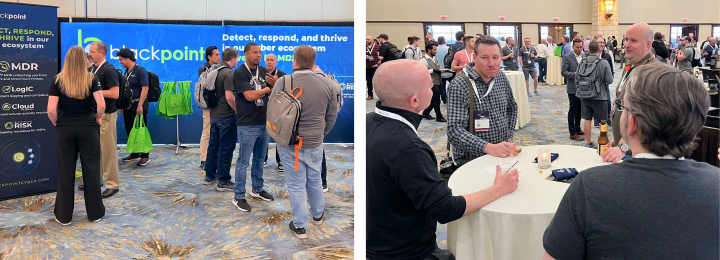On Thursday, the Right of Boom attendees heard from speakers such as Brian Blakely, Chris Loehr, Phyllis Lee, and our very own Jon Murchison. Sharing the stage with these people was an honor, as we’ve worked with them in the past and are proud to combat global cybercrime alongside them. Jon’s keynote focused on BlackCat’s advanced TTPs, with a thrilling finale featuring surprise special guest, Brandon Wales, Executive Director of CISA.
His conversation with us focused on three key topics:
1. The dangers of cloud migration
When much of corporate American shifted to hybrid or remote work, the usage of cloud environments skyrocketed. With this reactive transfer of data came a massive increase in vulnerable attack surfaces. In order to produce proactive, resilient results, radical rethinking is mandatory when we partner with and create new technology and security solutions.
2. The pervasive nature of cyber incidents, and their impact on us all
With extended attack surfaces comes an expanded blast radius. All businesses, industries, and levels of government are connected. When a cyberattack occurs, it impacts the daily lives of American companies, communities, and citizens. Therefore, corporate America, alongside their MSPs and IT departments, must join in the shared responsibility of cyber protection with the U.S. government. Instead of being viewed as a secondary matter, mature IT standards and robust cybersecurity need to be a core business interest.
3. Lessons learned from attacks that made headlines
“Cyber Pearl Harbor isn’t one big event, it’s death by a thousand cuts.” – Executive Director Wales
When reflecting on the series of cyberattacks in 2020-2021, including Colonial Pipeline, Executive Director Wales shared three key lessons learned.
- First, know what’s on your network so you can properly secure it. The basics must be covered so your team can focus on more sophisticated defensive matters. “There are a lot of things that are set up for convenience, that…with a little bit of additional effort, could make these networks more secure.” For example, only 30% of Microsoft Enterprise customers have multi-factor authentication (MFA) enabled. Get the basics, albeit inconvenient, solidified so you can focus on tactics that’ll withstand even the most advanced attacks.
- Second, truly understand the interconnectedness of your cyber and physical systems so you’re able to effectively respond if a breach occurs. Being able to precisely locate the vulnerable source, as opposed to reacting in a widescale manner, is crucial. Then, think through the downstream effects your post-breach responses will have on your team, customers, and community. Build out your Incident Response Plan (IRP) with these considerations in mind.
- Lastly, make security the standard. For many of our partners, that looks like making Blackpoint Cyber a non-negotiable in their security stack. When it’s built in, your customers will use it. Additionally, make sure your security solutions are easy to use and configure. Those without IT expertise need to be able to properly respond to threats just as well as you.



